Conquer The Incredible Heights Of Arunachal Pradesh At Mayodia Pass In 2025
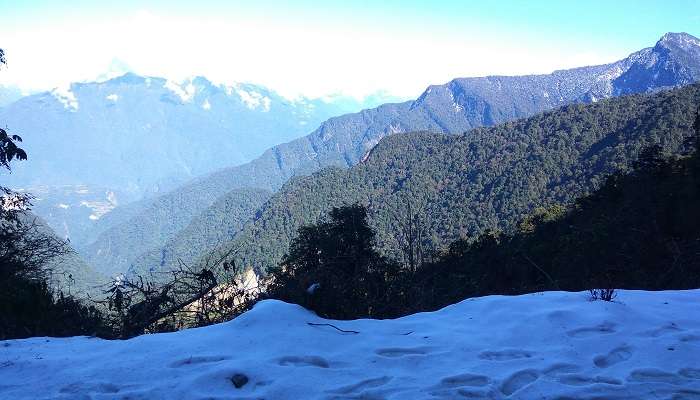
Mayodia Pass, 56 km from Roing in the Dibang Valley district of Arunachal Pradesh state in India, is a popular local tourist attraction due to the November to March winter snowfall, which is heaviest in January and February. The monsoon season starts in July. Visiting Mayodia during this time may be difficult due to unpredictable road conditions. Winter (October -January): It is the peak tourist season and the best time to visit Mayodia. Mayodia is a popular local tourist attraction due to the snowfall it receives during winter. Snowfall starts in November and continues until March, but heavy snowfall occurs between January and February.
Places To Visit Near Mayodia Pass
Mayodia Pass is approximately 56 kilometres from Roing, Arunachal Pradesh, a town in the Lower Dibang Valley district. “Mayodia” is the combination of two Idu-Mishmi words—”Mayu,” which is the name of the mountain, and “Dia,” which means “peak of the mountain,” thereby meaning “Peak of the Mayu Mountain.”
1. The Mehao Wildlife Sanctuary
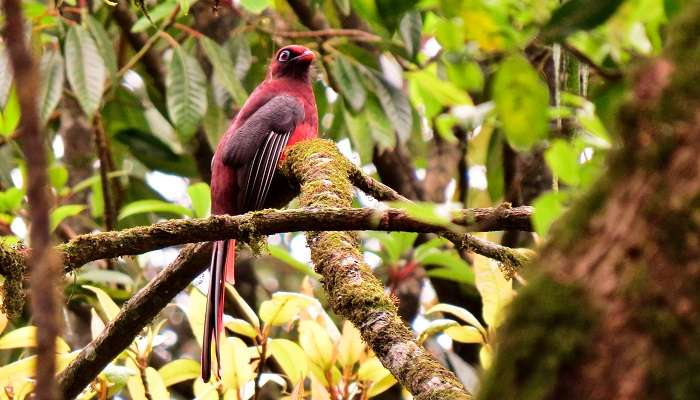
The Mehao Wildlife Sanctuary was declared to conserve the biodiversity around the Mehao Lake. The sanctuary is gifted with virgin natural lush green forests and lakes. It is home to rare species like wild ducks, takin, hoolock gibbon, tiger, leopard, red pandas, elephants, etc. Mehao, covering an area of about 4 sq. km, forms part of the sanctuary. The lake’s water is crystal clear, and walking around this natural lake is a divine pleasure. Roing is accessible by road and is connected to major cities in Arunachal Pradesh and neighbouring states. From Roing, visitors can hire local taxis or arrange guided tours to reach the lake. The journey involves a scenic trek through the lush forest of Mehao Wildlife Sanctuary. The altitude of the sanctuary varies from 900 to 3500 meters.
Location: It is near Rolling in the Lower Dibang Valley district of Arunachal Pradesh.
Distance from Mayodia Pass: Approximately 50 kilometres (31 miles) southwest.
Must Read: Things To Do In Arunachal Pradesh
2. Bhismaknagar Fort
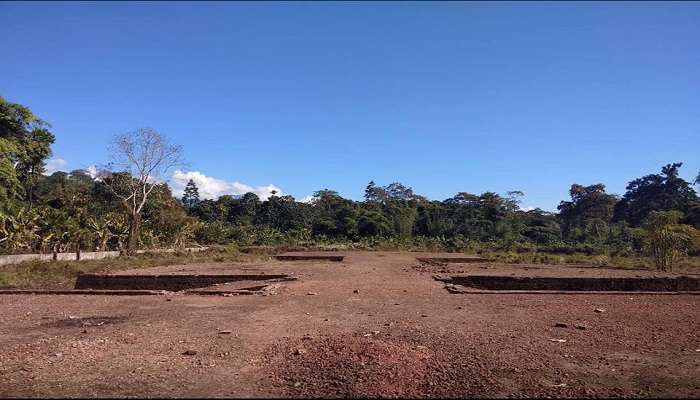
Built with burnt bricks in the 12th century, the Bhismaknagar Fort is one of Arunachal Pradesh’s oldest archaeological sites. Several artefacts, terracotta items and rare excavations housed in the fort are a testament to the region’s rich cultural past. Bhismaknagar fort, located nearly 30 km from Roing is tentatively dated to 8 century and is recorded as the oldest archaeological site in the region. The site was first explored by I. Block in 1848 and was later excavated from 1965-70. The complex houses the ruins of a brick-built structure of 1860.52 sq. m plinth area, with three halls, two extension rooms and six entrances. It has two impressive gates – the Eastern Gate and the Western Gate. Almost the entire fortress area is protected with a rampart wall made of bricks, stone and mud. A natural boundary of hills protects the Northern side of the fort.
Location: Situated near Roing in the Lower Dibang Valley district.
Distance from Mayodia Pass: Approximately 45 kilometres (28 miles) southwest.
3. Mehao Lake
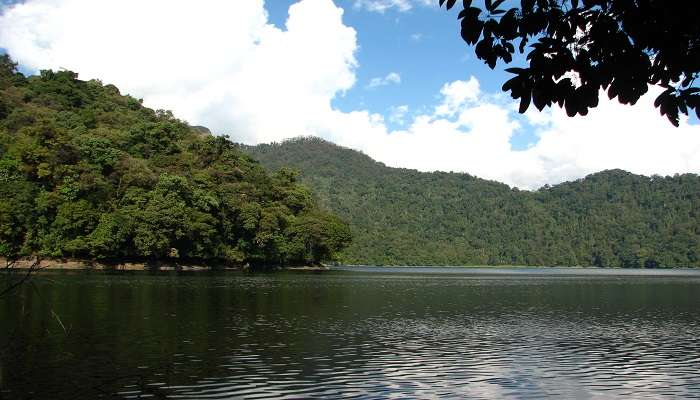
Mehao Lake, located in the Lower Dibang Valley district of Arunachal Pradesh, is a picturesque natural lake surrounded by lush green forests and mountains. The lake is formed by a natural dam made by the Dibang River. The apparent water of the lake attracts a considerable number of wild ducks. It is a vast lake covering an area of about 4 sq. km. The beautiful Mehao Lake is a nature’s treasure house. The lake attracts a lot of seasonal birds, and the water of Mehao Lake is obvious and a huge number of wild ducks are attracted towards Mehao Lake, especially during the winter season. It is situated at an altitude of 3000 feet above sea level and covers an area of about four sq km.
Location: Also near Roing, within the Mehao Wildlife Sanctuary.
Distance from Mayodia Pass: Similar to Mehao Wildlife Sanctuary, approximately 50 kilometres (31 miles) southwest.
Suggested Read: Places To Visit In Arunachal Pradesh
4. Roing
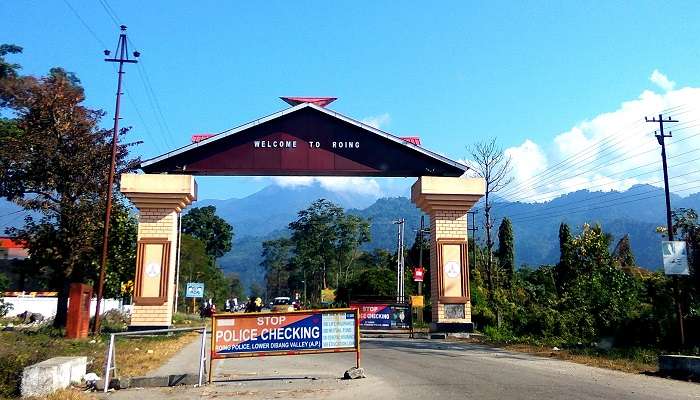
Roing is the district headquarters of the Lower Dibang Valley district in the Indian state of Arunachal Pradesh. It is the last central township at the northeastern frontier of India. Adi and Mishmi (Idu) are the principal indigenous dwellers of Roing. Notable tourist attractions are Mehao Wildlife Sanctuary, Sally Lake, Mehao Lake, Bhismaknagar Fort and Mayodia Pass, which remains covered with snow during peak winter. The town is located at the foothill of the Mishmi Hills. Roing is a perfect holiday destination to seek peace and a hassle-free vacation. The best time to visit Roing is between October and February.
Location: Headquarters of the Lower Dibang Valley district.
Distance from Mayodia Pass: Around 50 kilometres (31 miles) southwest.
5. Hunli
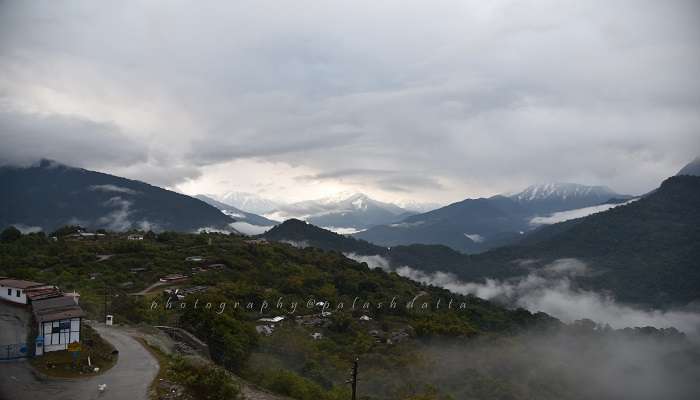
Hunli is a town and head office of Hunli-Desali Tehsil of Lower Dibang Valley district in the north-eastern state of Arunachal Pradesh, India. It is located on the 2,000-kilometre-long (1,200 mi) proposed Mago-Thingbu to Vijaynagar Arunachal Pradesh Frontier Highway along the McMahon Line. The well-maintained black-topped road provides thrill and eye-catching scenic beauty; visitors will enjoy the journey since it has many eye-catching views. The road from Roing to Hunli is in excellent condition and thrilling throughout.
Location: It is in the Dibang Valley district, near Roing.
Distance from Mayodia Pass: Approximately 55 kilometres (34 miles) southwest.
Suggested Read: Valleys In Arunachal Pradesh
6. Dehang-Debang
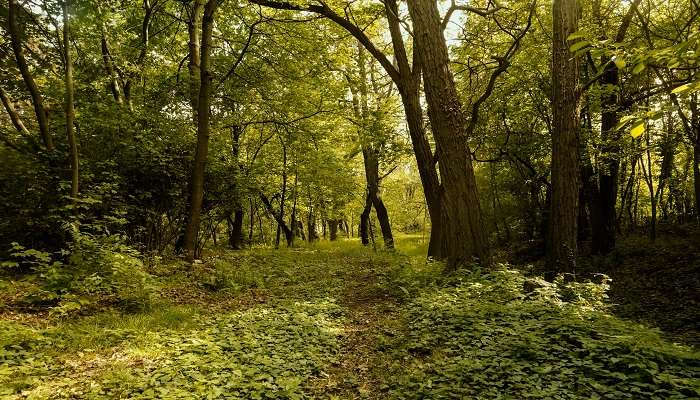
Dihang-Dibang, or Dehang-Debang, is a biosphere reserve established in 1998. It is in the Indian state of Arunachal Pradesh. The Mouling National Park and the Dibang Wildlife Sanctuary are located wholly or partly within this biosphere reserve. There is a rich representation of orchids, Rhododendrons and Primulas. The rare orchid, Vanda strangeana, lives here, and so do over 50 species of rhododendrons. One of the most unusual ungulates of the eastern Himalayas and Western Chinese mountains, the Takin, occurs here in small herds that range from 2500 to 4000m. The major tribal communities around DDBR are Ashings, Bokars, Boris, Gallos, Khambas, Membas, Minyongs, Mishmis, Palibos and Shimongs. Khambas and Membas inhabit the northern borders of Upper Siang–Gelling, Tuting and Singa.
Location: A region in the Dibang Valley district.
Distance from Mayodia Pass: Approximately 60 kilometres (37 miles) southwest.Further
Further Read: Honeymoon In Arunachal Pradesh
Now that you have a list of things to remember for your next adventure to Mayodia Pass plan your trip to Arunachal Pradesh. Don’t miss out on the opportunities to witness the majestic Himalayan peaks, trek through the lush forests, and soak in the serene beauty of the region. Book your trekking packages now and get ready to conquer the thrilling heights of Mayodia Pass!
For our editorial codes of conduct and copyright disclaimer, please click here.
Cover Image Credit: Ishan Jyoti Bora for Wikimedia Commons
Frequently Asked Questions About Mayodia Pass
What is the best time to visit Mayodia Pass?
The best time to visit Mayodia Pass is from October to December and from March to May. During these periods, the weather is pleasant, and the trekking trails are accessible.
How long does it take to complete the trek to Mayodia Pass?
The trek to Mayodia Pass typically takes 5-7 days, depending on the route taken and the trekker's pace.
Are there any permits required for the trek to Mayodia Pass?
Yes, trekkers need to obtain a permit from the Arunachal Pradesh government to trek to Mayodia Pass. The permit can be obtained through a registered tour operator or at the local forest office.
What are the nearest towns to Mayodia Pass?
The nearest towns to Mayodia Pass are Roing and Tezu, which are connected by road and air to major cities in India.
Can I see snow on the trek to Mayodia Pass?
Yes, Mayudia Pass receives heavy snowfall during the winter months (December to February). Trekkers can expect to see snow on the trek during this time.
People Also Read:
Indrahar Pass Jalori Pass Nathula Pass

Innovative Content Writer Focused on Producing High quality, Original Content that drives traffic and engages readers. Experienced in Content strategy and analytics to measure content performance using tools such as SQL, Power BI, Excel.











